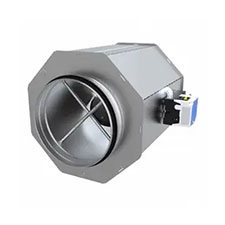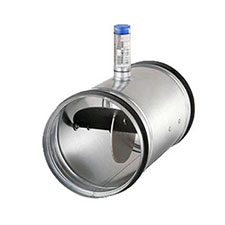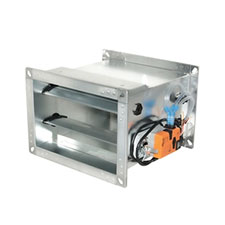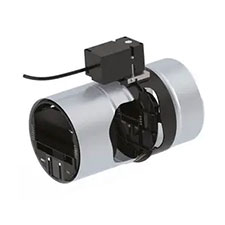Blog
Download our brochure

Stay informed
The main aim of a Heating, Ventilation and Air Conditioning (HVAC) system is to achieve and maintain the desired indoor environment condition at the minimum possible energy consumption. For big centralized systems, it is of great importance that the proper design strategy is selected. The two main air system types found in centralized HVAC systems are Constant Air Volume (CAV) and Variable Air Volume (VAV) systems.
This article aims to present the main features of the two types of systems, their advantages and disadvantages and what is the selection process between the two at the design stage of an HVAC system.
What is a centralized air conditioning system?
In a centralized system, air is heated or cooled at a central location and then is distributed across numerous rooms or zones via fans and ducting networks. In many centralized systems, air is treated in an Air Handling Unit (AHU) that contains both heating and cooling coils, a single or multiple fans and air filters. The way that the conditioned air is distributed to the various zones depends on whether CAV or a VAV system is implemented.
What is a CAV system?
In a CAV system, the desired indoor conditions in a zone are achieved by keeping the air flow rate constant and varying the air temperature. Air is distributed from the main fan of the centralized HVAC system (e.g. an AHU) through the main ducts and reaches the conditioned spaces via smaller duct branches. Since in a CAV system air is supplied to each room at a constant rate, it is of great importance to calculate what is the required air flow for each room at the design stage. The desired airflow in each room can be achieved either by carefully varying the dimensions of each duct branch or by installing manual volume control dampers or constant air volume regulators.
What is a Volume Control Damper (VCD)?
A volume control damper is a device installed inside the ductwork that allows for the adjustment of the passage free area, and as a result, the adjustment of the volume flowrate through each duct. Volume control dampers feature rotating blades that can be manually regulated or be controlled via actuators. They are a relatively cheap and reliable solution which allow the installer to guarantee that only the airflow necessary to achieve the desired indoor conditions reaches a room.
What is a Constant Air Volume (CAV) regulator?
As the name suggests, a CAV regulator is a device that maintains a constant flow of air through it. It achieves this by automatically varying the free area of a duct branch, based on the pressure fluctuations occurring inside the duct. As a result, CAV regulators offer automatic balancing of air ducts within a range of operating pressure which is defined by the manufacturer. Contrary to the use of VCDs, a correctly selected CAV regulator will not need balancing after installation to guarantee the desired airflow delivery.
What is a VAV system?
In a VAV system, the desired indoor conditions within a zone are achieved by varying the air flow rate based on the specific heating or cooling load of the zone. Due to the more advanced design and control requirements, a VAV system is considered a more complex solution compared to the CAV, but if implemented correctly it’s the more cost-effective system overall. The proper functioning of a VAV system depends on the performance of the VAV dampers.
What is a Variable Air Volume (VAV) damper?
A VAV regulator is the device that regulates the amount of air flowing into a zone, and it’s the most vital part of a VAV system. In its simplest form, a VAV damper is essentially a VCD with an electric actuator and an airflow measuring cross. Based on the readings from the room thermostat and the airflow sensor on the damper, the actuator regulates the position of the damper blade, and controls the flow of air passing into the zone. Other versions of a VAV damper may also include integrated sound attenuators and/or an electric or water heater to reheat the air before it’s introduced into the room.
Advantages and disadvantages
In general, CAV systems are considered to be an older design strategy, however it still has some applications in modern HVAC system designs. The main advantage of the CAV systems is that they are much simpler in terms of their design, process, and installation. They also come at lower-up front cost compared to VAVs. However, if the centralized HVAC system is serving various zones with significantly different heating and cooling loads, then the greater energy efficiency offered by a VAV makes it a more economical solution in the long run.
VAV systems are more complicated to design, but they are the optimum solution for controlling different zones with different heating or cooling loads.
Typical uses:
As stated before, CAV systems are the preferred choice for buildings with zones with similar heating or cooling loads with no significant fluctuations for example small offices and small retail stores.
VAV systems are the ideal choice for larger buildings, where different rooms may require a different load by design and where the load of each room may vary significantly during the day. Examples of such buildings include supermarkets, airports, and hospitals.




